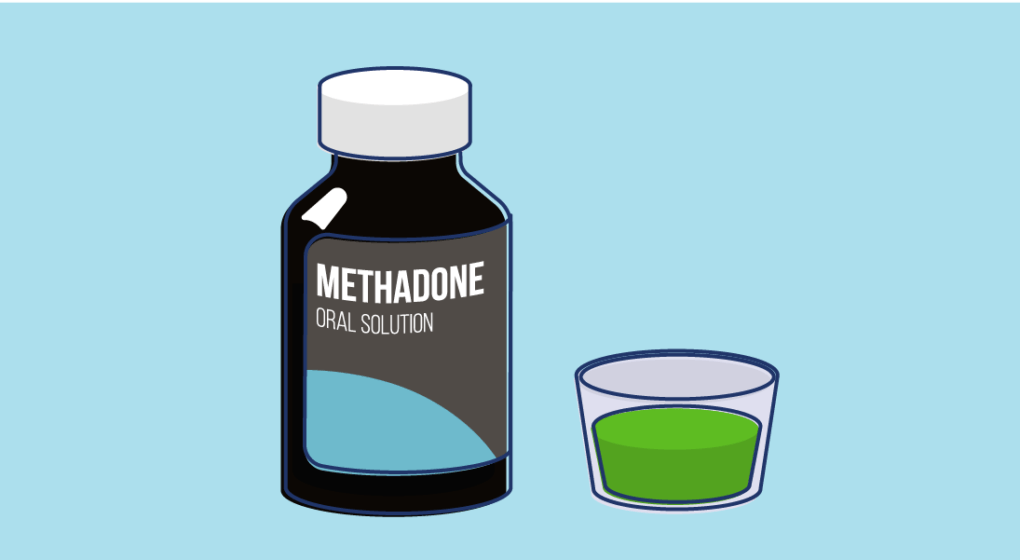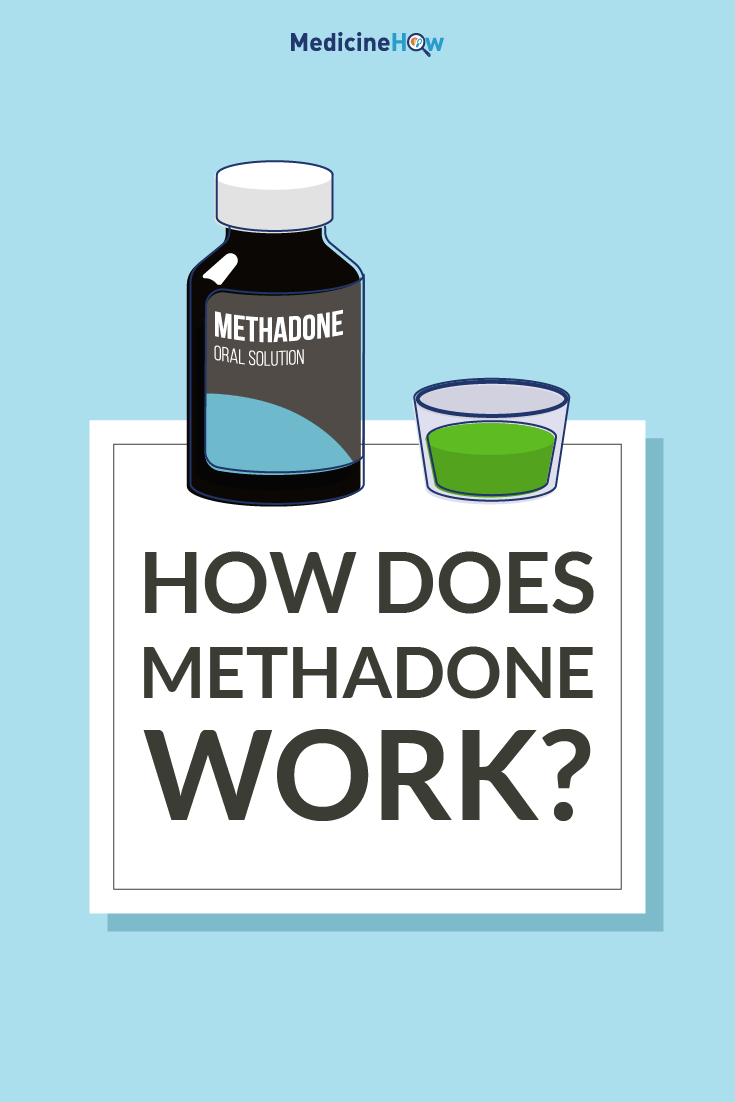
Methadone is a type of drug called an opioid and it works by activating opioid receptors in your body, which has a number of effect of the body including to relieve pain. It can be used in the relief of severe, chronic pain or to help people who are dependent on other opioids, such as heroin.
Brand Names and Doses
Methadone is the generic name, which is the name of the actual drug component inside your medication. The are various brand names that contain methadone that are manufactured by different drug companies.
Brand names of methadone include Physeptone tablets (10mg) or injection (10mg/mL) and Biodone Forte liquid (5mg/mL.)
Methadone has very good oral bioavailability, which means that most of the drug that is swallowed will be absorbed into your bloodstream so that it will have an effect. This is a good thing because it is much simpler to take a tablet or a syrup than an infection or sublingual tablet, which are often needed for medications with poor oral bioavailability.
What type of drug is it?
Methadone is a type of drug called an opioid. This is a drug class that helps us to group drugs that work in a similar way together. Other opioid medications include:
- Buprenorphine
- Codeine
- Dextropropoxyphene (Propoxyphene)
- Fentanyl
- Hydromorphone
- Methadone
- Oxycodone
- Pethidine
- Tramadol
Methadone is a strong opioid that is often a good option for people who have very severe pain. It also has a long half life, which mean that it stays in your body for a relatively long time after you take a dose because your body takes longer to excrete it. This makes less useful for quick relief of acute pain, but preferable for ongoing chronic pain.
What is Methadone used for?
Methadone can be used for two very different purposes:
- To relieve severe chronic pain
- To assist people with a dependence on opioids
Methadone is only used for chronic pain (not acute pain) because it stays in your body for a few days after taking a dose. It is also quite strong, so only recommended for severe pain, when other analgesic drugs are not able to provide relief.
How does Methadone work?
Everyone naturally has endogenous opioids inside their body, which can bind to special receptors, called opioid receptors, to activate several effects in the body. When an endogenous opioid attaches to the right receptor, it has several effects on the body:
- Provides analgesia to relieve pain
- Slows down breathing
- Makes you feel tired
- Makes it more difficult to defecate.
Methadone manipulates this natural process by activating the same receptors that the endogenous opioids do. It mimics the effect of natural opioids in your body.
Additionally, methadone can decrease the transmission of pain impulses in the body. It does this by interrupting the pain messages in the spinal cord and interfering with the messages coming from the brain in the central nervous system (CNS). This is another way it can relieve pain in the body.
Methadone is useful to help people with opioid dependence because it can provide a safe dose of opioid so that the individual doesn't experience withdrawal effects. Methadone is given in a safer way than illicit opioids, because it can be taken in a simple oral liquid, rather than via intravenous injection. Over time, the dose can also be gradually decreased to reduce dependence on opioids.
Side Effects
There are several general side effects of opioid medications such as methadoine that can affect some people. Common side effects of opioids may include:
- Drowsiness
- Dizziness
- Headache
- Dry mouth
- Infrequent urination
You can find out more information about some of the specific side effects by clicking on them below.
Nausea
Constipation
Respiratory Depression
Dependence
Cautions
There are several people who may need special attention if they are taking methadone due to other medications or health conditions they have. For example, people who have the following conditions often need a lower dose than usual:
- Endocrine disease
- Hypothyroidism
- Adrenocortical insufficiency
- Myasthenia gravis
- Central nervos system (CNS) depression
- Frequent use of alcohol
Additionally, people with epilepsy are more likely to have a seizure while taking buprenorphine, so this should be considered.
When used in high doses, methadone can change the rhythm of your heart and prolong the QT interval and increase the risk of arrhythmia.
Special Cases
People who are elderly often require a lower dose of opioids such as methadone than other adults.
This is because their body takes longer to process the drug, so the concentration in the bloodstream builds up more quickly. As a result, elderly people are more likely to experience side effects, such as cognitive impairment, sedation and respiratory depression. They may also be at risk for having a fall.
Interactions
If you take methadone at the same time as another drug the way they work can sometimes interact and change their effect on your body.
There are many drugs that increase the QT interval of the heart in a similar way to what methadone does. When these are used together, there is an increased risk of arrhythmia.
All drugs that cause your breathing to slow down can increase the risk of a serious side effect of methadone: respiratory depression. Many drugs to lower blood pressure, such as beta blockers, can have this effect. Often they can be used together, but it's important that your doctor knows about the combination and checks that the dose is right for your body.
Some drugs that are used in the treatment of depression called selective seretonin reuptake inhibitors (SSRIs) can cause a condition called seretonin toxicity. The risk of this is higher if methadone is taken at the same time, so you need to be on the lookout for early signs.
Methadone can interact with many other medications including:
- Carbamazepine
- Efavirenz
- Fluvoxamine
- Nevirapine
- Phenobarbitone
- Phenytoin
- Rifampicin
- Ritonavir
- St John's Wort
- Voriconazole
Often these drugs can be used together, but your doctor needs to know that you are taking them at the same time so that the dose can be adjusted, if needed.
Pregnancy and Breastfeeding
Methadone is not recommended for pregnant women because your baby is more likely to have respiratory depression, which can be fatal. Additionally, your baby may experience withdrawal effects when they are born and no longer get the dose from your blood stream.
Instead, it is usually best for pregnant women to take other medications to relieve pain while they are pregnant, such as paracetamol.
For pregnant women with opioid depended, buprenorphine appears to be a better option because the withdrawal effects for the baby after birth are usually less severe.
For women who are breastfeeding, occasional doses with methadone are thought to be safe. However, their may be some risk to your baby if they are used every day for an extended period of time.
Pin it!


